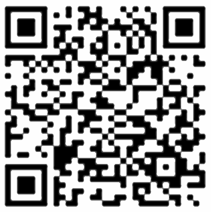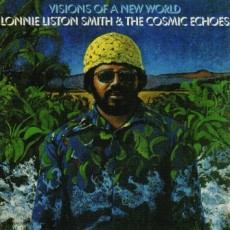
Daily Dose Of Jazz…
Lonnie Liston Smith, Jr. was born into a musical family on December 28, 1940 in Richmond, Virginia. With his father a member of Richmond Gospel music group The Harmonizing Four, as a child he was privy to groups such as the Swan Silvertones and the Soul Stirrers with a young Sam Cooke at his house. He learned piano, tuba and trumpet in high school and college, graduating from Morgan State University in Baltimore, Maryland with a degree in music education.
Influenced by Charlie Parker, John Coltrane and Miles Davis, while still a teenager at college, Smith became well known locally as a backing vocalist and pianist. He played the Baltimore area with Gary Bartz, Grachan Moncur, Mickey Bass, backed Betty Carter and Ethel Ennis and played in the house band at the Royal Theatre.
1963 saw him moving to New York, once again with Carter for a year followed by Rahsaan Roland Kirk and recording Here Comes The Whistleman. After this stint with Kirk he joined Art Blakey’s Jazz Messengers sharing the piano seat with Mike Nock and Keith Jarrett and then with Max Roach. He would go on to play with Pharoah Sanders improvising and pushing the creative boundaries of free jazz. It is at this point that Smith began experimenting with electric keyboards:
In 1969 Lonnie also backed Sanders vocalist Leon Thomas on his first album Spirits Known and Unknown, played with Gato Barbieri on The Third World, and with Miles Davis for On The Corner. He formed the Cosmic Echoes in 1973 with Cecil McBee, George Barron, Joe Beck, David Lee, James Mtume, Sonny Morgan, Badal Roy and Geeta Vashi. The group blended fusion, soul and funk on several recordings for Flying Dutchman Records over the next twelve years.
After the crossover success of the 1970s, he moved into the smooth jazz format, however, public interest slowly waned. By the mid-Eighties he returned to his acoustic roots with McBee and Al Foster recording a session of standards for Bob Thiele’s Startrak label. But dealing with the labels bottom line he returned to smooth jazz working with Phyllis Hyman and Stanley Turrentine. He also delved into hip-hop working with rapper Guru on his groundbreaking Jazzmatazz, Vol. 1. Pianist and keyboardist Lonnie Liston Smith established his own label Loveland, gathered greater recognition with Sony International distributing his Cosmic Echoes years, and has since continued to compose, record and tour to festivals worldwide.
More Posts: piano

Daily Dose Of Jazz…
Melton S. Mustafa was born on November 23, 1947 in Miami, Florida, the younger brother of Jesse Jones, Jr. He started playing the trumpet in junior high school and as a teenager played in a five-piece R&B/calypso band led by his brother. As a young adult in the Sixties, he studied at Berklee College of Music and Mississippi Valley State College before graduating from Florida A&M with a degree in music education.
During this period he started played behind Sam and Dave, Betty Wright, Lattimore, the Marvelettes and Joe Simon. His love for jazz never waning, his visibility on the Miami jazz scene increased when Melton joined hard bopper multi-instrumentalist Ira Sullivan. By the 80s he was playing with the Duke Ellington Orchestra led by mercer Ellington, Jaco Pastorius, James Williams, Bobby Watson and John Hicks and Mingus Dynasty among others.
Mustafa joined the Count Basie Orchestra in 1984 and stayed for eight years. In 1992 he formed his own big band and a couple years later signed with Contemporary/Fantasy releasing his debut album Boiling Point. He followed up with his sophomore project St. Louis Blues in 1997. Never far from jazz standards and ballads his quintet recorded his latest CD titled The Softer Side, Scenes from Miami Vol. 1 featuring Duffy Jackson on drums, Dennis Marks on bass and Jim Gasior on piano.
He produces his Annual Melton Mustafa Jazz Festival at the university that has welcomed Jon Faddis, Abraham Laboriel, Benny Golson, Dr. Nathan Davis, Dr. Grover Washington Jr., Dr. James Moody, Idris Muhammad, George Cables, Wallace Roney, Patrice Rushen, Geri Allen, Jimmy Owens, Billy Cobham, Herbie Mann, Dr. Billy Taylor, Clark Terry, Curtis Fuller, Nestor Torres, Winard Harper, Najee, Randy Brecker, and others.
As an educator he is the Director of Jazz Studies at Florida Memorial University, teaching Music Theory, Jazz Composition and other jazz related courses. The hard bop, post bop, soul and swing trumpeter, composer, arranger and producer and educator Melton Mustafa continues to perform, record and tour.
More Posts: trumpet
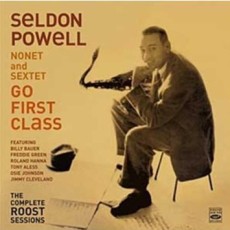
Daily Dose Of Jazz…
Seldon Powell was born on November 15, 1928 in Lawrenceville, Virginia. A classically trained saxophonist and flautist who studied at Juilliard in New York City, he went on to work briefly with Tab Smith in 1949 before joining and recording with Lucky Millinder the following year. For the next two years he would spend in the military and upon discharge became a studio musician.
A solid musician with the ability to move between genres from big band to hard bop to soul jazz and R&B, over a forty year career he would record four albums as a leader between 1956 and 1973 and another 60 album sessions as a sideman with Clark Terry, Johnny Hammond Smith, Buddy Rich, Louis Bellson, Neal Hefti, Billy Ver Planck, Sy Oliver,, Erskine Hawkins, Ahmed Abdul-Malik, Richard “Groove” Holmes, Gato Barbieri, Dizzy Gillespie, Gerry Mulligan,Benny Goodman, Woody Herman, roland Hana, Osie Johnson, Freddie Green, Gus Johnson, Sonny Stitt, Friedrich Gulda, Art Farmer, Cal Tjader, Billy Taylor, Ernie Wilkins, Panama Francis, Teri Thornton, Jimmy Forrest, Charlie Byrd, Oliver Nelson and the list goes on.
He recorded for Epic, Roost, Savoy, RCA, United Artists, Lion, Riverside, EmArcy, Golden Crest, Candid, ABC, New Jazz, Impulse, Solid State, Verve, 20th Century, Atlantic, and Sesac record labels. Tenor saxophonist and flautist who concentrated in the swing, progressive and soul jazz, big band and rhythm & blues genres passed away on January 25, 1997 in Hempstead, New York.
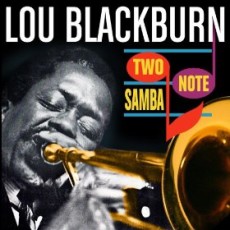
Daily Dose Of Jazz…
Lou Blackburn was born on November 12, 1922 in Rankin, Pennsylvania. Performing mainly in the swing genre, his adaptability lent his trombone to pursue several other genres including the West Coast jazz, soul jazz and mainstream mediums.
During the 1950s Lou played swing with Lionel Hampton and also with Charlie Ventura. In the early 1960s he began performing with Duke Ellington’s big band and with musicians like trumpeter Cat Anderson, Horace Tapscott, Melvin Moore, Red Callender and Bobby Bryant. He performed sideman duties on the album Mingus at Monterey with Charles Mingus. During this period he did some crossover work with The Beach Boys and The Turtles. He was also a part of the recording session for the film The Manchurian Candidate
Blackburn recorded as a leader in 1963, Jazz Frontier and Two Note Samba for Imperial Records and both have been reissued by Blue Note as a compilation The Complete Imperial Sessions. He also recorded Perception, Brass Bag, Jean-Bleu and Ode To Taras. As a sideman he worked with June Christy, Gil Fuller and The Three Sounds recording for Capitol, Pacific Jazz and Blue Note record labels. Trombonist Lou
His decision to live abroad moved him to Germany where he toured very successfully out of Germany and Switzerland with his ethno jazz band Mombasa that had strong African content and players. He also put together an ensemble called the Lou Blackburn International Quartet that had a more progressive feel. Trombonist Lou Blackburn passed away on June 7, 1990 in Berlin, Germany.
More Posts: trombone
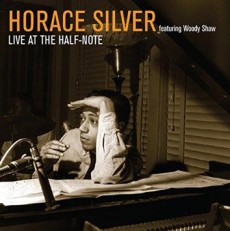
Daily Dose Of Jazz…
Horace Silver was born Horace Ward Martin Tavares Silva on September 2, 1928 in Norwalk, Connecticut to a mother from Connecticut and a father from Maio, Cape Verde. He began playing the piano as a child, receiving classical music lessons and Cape Verde folk music from his father. When he turned 11 he became interested in becoming a musician, after hearing the Jimmie Lunceford Orchestra.
From ninth grade Silver played tenor saxophone in the Norwalk High School band and orchestra, influenced by Lester Young. He played gigs locally on both instruments while still at school and around 1946 he moved to Hartford, Connecticut, taking a regular job as house pianist in a nightclub. His big break came around 1950, backing saxophonist Stan Getz at a Hartford club. Liking what he heard, Getz took Silver’s band on the road. With Getz he made his recording debut on the Stan Getz Quartet album, along with bassist Joe Calloway and drummer Walter Bolden.
The following year Horace left Getz, moving to New York City and worked at Birdland on Monday nights. During that year, he met the executives of Blue Note Records, eventually signed with them, and remained there until 1980. He also co-founded the Jazz Messengers with Art Blakey.
From 1951 he free-lanced around New York, recorded mostly his own compositions with his trio, featuring Blakey on drums and Gene Ramey, Curly Russell or Percy Heath on bass. Throughout his career he would record with Clifford Brown, Lou Donaldson, Kenny Dorham, Hank Mobley, Junior Cook, Blue Mitchell, Louis Hayes, Carmell Jones, Joe Henderson, Woody Shaw, Tyrone Washington, Michael and Randy Brecker, Lee Morgan, Benny Golson, Donald Byrd and Miles Davis All Stars.
He music reflected the social and cultural upheavals of the 60s and 70s as he briefly played electric piano and including lyrics in his compositions, and his interested in spiritualism also came into his music.
He received a National Endowment for the Arts Jazz Masters Award, recorded his final studio session in 1998 titled Jazz Has A Sense of Humor, was awarded the President’s Merit Award by the National Academy of Recording Arts and Sciences, penned his autobiography Let’s Get to the Nitty Gritty: The Autobiography of Horace Silver and published by University of California Press, and many of his compositions have become jazz standards.
Horace Silver, whose early influences were Bud Powell, Art Tatum, Teddy Wilson, Nat King Cole and Thelonious Monk, and who and influence for Bobby Timmons, Le McCann, Ramsey Lewis and Cecil Taylor, passed away of natural causes in New Rochelle, New York on June 18, 2014. The pianist and composer known for his distinctive playing style and pioneering compositional contributions to hard bop, featured surprising tempo shifts from aggressively percussive to lushly romantic merged with funk long before that word could be used in polite company.
More Posts: piano


